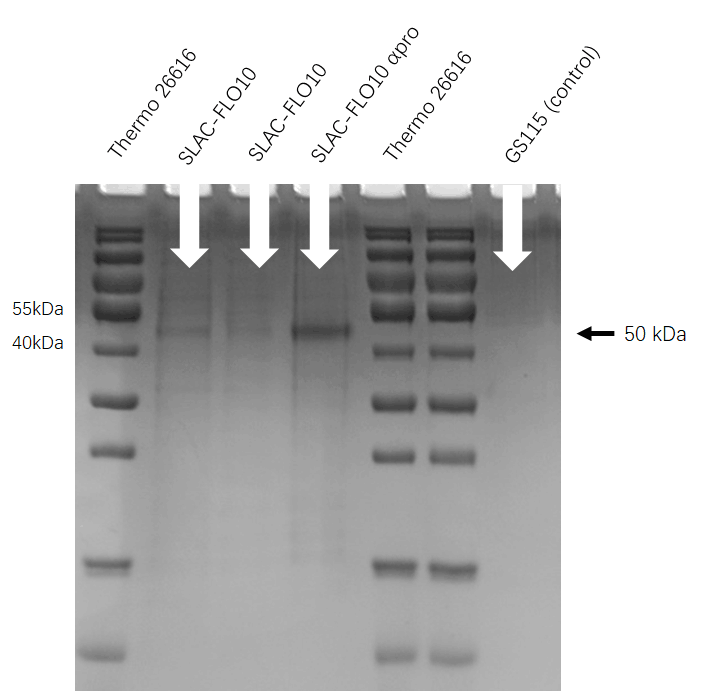Part:BBa_K3196002
SLAC
Small laccase gene
Sequence and Features
- 10COMPATIBLE WITH RFC[10]
- 12COMPATIBLE WITH RFC[12]
- 21COMPATIBLE WITH RFC[21]
- 23COMPATIBLE WITH RFC[23]
- 25COMPATIBLE WITH RFC[25]
- 1000INCOMPATIBLE WITH RFC[1000]Illegal BsaI.rc site found at 345
Characterization
Amplified from S. coelicolor.
Usage and Biology
Laccase is a multicopper oxidase, capable of catalyzing one-electron oxidation of a wide range of substrates to generate radicals while concomitantly reducing molecular oxygen to water[1]. Laccases are widely distributed in nature. They have been isolated from fungi, plants, insects and bacteria[2] of which fungal laccases are well characterized [3]. Bacterial laccases, such as the small laccase from S. coelicolor (SLAC), can be useful alternatives to fungal laccases. SLAC exhibits some desirable characteristics such as activity at high temperatures and alkaline pH [4], making it a potential candidate in biotechnological applications. Extracellular expression could be a desirable alternative for expression of foreign proteins since it simplifies purification steps [5]. P. pastoris is usually the preferred host for the production of industrial enzymes.
DNA Gel Electrophoretic
Signal peptide FLO10, FLO10 αpro, PHO1, PHO1 αpro can increase the activity of laccase expressed in Pichia pastoris [6] . We chose 5 signal peptides and added on the upstream of SLAC, using AOX1 promoter to start gene expression and using his tag to purify SLAC enzyme. Assembled SLAC with different signal peptides on the one hand enabled us to measure the effects of enzymes, and on the other hand facilitated us to select specific combinations of signal peptides and enzymes to build system.
SDS-PAGE
Enzyme Activity
’’’Characterization’’’
| None |




